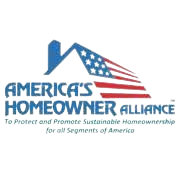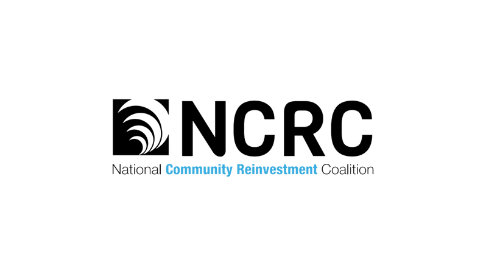Get Involved
NCST’s work increases access to homeownership, promotes resilient neighborhoods, and advances racial equity by advocating for policy change.

The Neighborhood Homes Investment Act calls for the creation of a new federal tax credit that will produce new equity investment dollars for the development and renovation of 1-4 family housing in distressed urban, suburban, and rural neighborhoods.
In hundreds of communities throughout the country, neighborhood revitalization is being stymied by the “value gap” — the situation in which the cost of rehabilitating or building a home is greater than the post-construction value of the home.
While the Low-Income Housing Tax Credit (LIHTC) has provided an effective means of closing the development gaps in low-income, multi-family rental housing, there is no reliable reinvestment tool to close the value gap for our country’s declining 1-4 family housing stock— even though this housing typology accounts for the greatest percentage of all residential structures in places like Newark, Hartford, Pittsburgh, New Orleans, Springfield, Detroit, Flint, Stockton, Memphis, Cincinnati, Columbia, Indianapolis, and so many more cities across the U.S.

The value gap contributes to three interrelated conditions that challenge urban prosperity:
Blight, vacancy, and abandonment – In markets where the “numbers don’t work” – e.g., it costs more to build or rehab a house than the property can be sold for – owners will walk away from homes that are no longer habitable and can’t be refinanced or sold. Without a financing tool to close the value gap, even the most resourceful housing developers can not (and will not) be able to address the thousands of vacant R-1 zoned properties that burden distressed neighborhoods.
Conversion of homeownership neighborhoods to absentee landlord neighborhoods – The dearth of reinvestment dollars for distressed, low-density neighborhoods creates a favorable environment for absentee owners/investors who convert aging homeownership housing to rental housing in once stable owner-occupant neighborhoods. Poorly-maintained rental housing, owned by absentee landlord/investors, undermines quality of life and spurs declining property values in small and mid-sized cities across the country.
Racial inequity – The lack of capital for reinvestment in low- and moderate-income neighborhoods has exacerbated racial inequities, in particular, the great disparity between African American family wealth and the family wealth of every other ethnic and racial group in America. As reinvestment-starved neighborhoods continue to decline, so do the assets of the families that own property within them.
We estimate that each $1 billion in NHIA investment would result in the following impacts nationwide:
25,000 homes built or rehabilitated
$4.25 billion of total development activity
33,393 jobs in construction and construction-related industries
$1.82 billion in wages and salaries
$1.25 billion in federal, state, and local tax revenues and fees
In addition, this tax credit will improve property values, increase family wealth, decrease blight and abandonment in distressed neighborhoods, and create more and better options for shelter— all of which indirectly enhance multiple determinants of health and well-being in America’s residential communities.
It has been introduced in the U.S. Senate by Senators Ben Cardin and Todd Young.
Across the country, thousands of once-thriving urban and rural communities now struggle with stagnating or distressed neighborhoods and low homeownership rates. In many of these communities, single-family homes comprise most of the housing stock and many of these homes need substantial rehabilitation or replacement. Dilapidated homes have been abandoned, undermining neighborhood stability and the local tax base. At the same time, a shortage of starter homes in good condition is thwarting the American dream of homeownership, as well as the primary means of building wealth and financial security. The dilemma is that these neighborhoods cannot retain or attract working families without quality homes, but property values there are too low to support the cost of building or substantially rehabilitating quality homes.
The Neighborhood Homes Investment Act (NHIA) is a federal proposal to break this stalemate. NHIA would offer tax credits to attract private investment for building and rehabilitating owner-occupied homes, creating a pathway to neighborhood stability through sustainable homeownership.
CLICK HERE TO DOWNLOAD AN EXECUTIVE SUMMARY OF THE NHIA PROPOSAL
The NHIA builds on the success of the Low Income Housing Tax Credit (LIHTC) for affordable rental housing and New Markets Tax Credit (NMTC) for economic development. Like LIHTC and NMTC, the NHIA harnesses the creativity and discipline of the private market but this credit’s sole function would be developing and rehabilitating owner-occupied, single-family homes.
The goal of the Neighborhood Homes Investment Act is to create a financing tool for single-family housing, as powerful as Low-Income Housing Tax Credit (LIHTC), to help transform neighborhoods across the country. This new financing tool will not only drive much needed resources to investment-starved communities, but it will also enlarge and elevate the nascent affordable, single-family housing development industry that was catalyzed by events like Hurricane Katrina and the mortgage foreclosure crisis.
Since the creation of the LIHTC in 1986, the community development movement has concentrated the bulk of its resources (political power, talent, and funds) on multi-family, low-income rental housing. LIHTC was an easy fit with the thousands of empty, hulking apartment buildings that dominated the urban landscape at that time. When community development corporations and investors realized that thousands of new and rehabbed units could be entirely financed through this reliable and reoccurring program, much of the community development movement began to shift toward low-income rental housing production.
In under a decade, LIHTC became the most productive affordable housing finance tool in urban America. To date, LIHTC has created 2.5 million affordable rental units, and the program accounts for the vast majority (approximately 90 percent) of all new affordable rental housing built in the US today. A vast ecosystem of lenders, syndicators, designers, lawyers, and builders has developed to facilitate this program which consistently receives bipartisan support at the local, state and national levels.
CLICK HERE TO SEE HOW NHIA COMPARES WITH OTHER HOUSING TAX CREDIT PROGRAMS (E.G., LIHTC AND NMTC)
States would allocate and administer the NHIA, as they currently do for rental housing with LIHTC. The process would start with states writing plans for allocating their NHIA tax credits based on set criteria, including the prospect that a proposed project will contribute to neighborhood stabilization and revitalization, and the strength of project sponsors. States could also add their own allocation criteria. States would then select NHIA project sponsors (e.g., developers, investors, lenders, local governments) through a competitive process.
Sponsors would use the tax credits to raise equity capital from investors and oversee the development and marketing of the homes. Investors – not the federal government – would assume construction and marketing risk. Investors would receive tax credits only after the construction or rehabilitation work is completed and the property is occupied by an eligible homeowner.
Tax credits will provide a powerful incentive for the private sector to build and rehabilitate homes to lift up struggling neighborhoods. Unlike a grant program, the NHIA tax credit would pay only for “success” because the credit is only applied after construction is completed and a qualified homeowner occupies the house. In addition, the NHIA tax credit will fill only the actual value gap, as determined by the market. If a home sells for more than the cost of the development, no tax credits will be used. The private sector shoulders the key risks, such as the possibility that project does not get completed or a qualified homeowner does not purchase it.
CLICK HERE FOR A SIMPLE VISUAL DESCRIPTION OF NHIA IN ACTION
Want to know if your city, neighborhood, or street qualifies for NHIA funding?
Blue areas are eligible for Neighborhood Homes funding.
Step 1: Click here to access NCST’s interactive map.
Step 2: Click on “Show geographies” on the top left side of the webpage to select cities or states to see eligibility.
Neighborhood Homes Coalition: Senators introduce ‘Neighborhood Homes Investment Act’ to expand affordable homeownership opportunities and revitalize communities (3/7/2023)
The Neighborhood Homes Coalition: 100 House Members pledge support to ‘Neighborhood Homes Investment Act’ to expand affordable homeownership opportunities and revitalize communities (11/29/2022)
The Hill: More than 100 US lawmakers pledge support for affordable housing legislation (11/29/2022)
Politico: Opinion | When It Comes to Inflation, Our Focus Should Be On the Cost of Housing (3/21/2022)
Novogradac: Creating NHTC, Expanding LIHTC Could Finance Nearly 1 Million Affordable Homes, Help Address Inflation and Promote Racial Equity (2/21/2022)




































For more information about NHIA, or to register your support for the proposal, please email [email protected].
NCST’s work increases access to homeownership, promotes resilient neighborhoods, and advances racial equity by advocating for policy change.